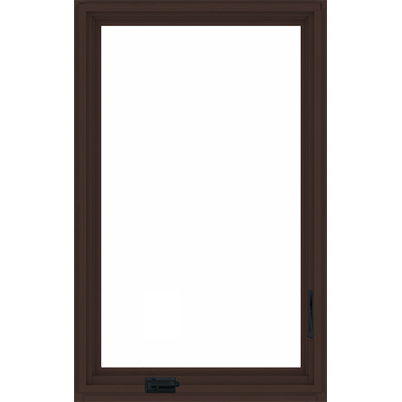Triple-pane windows: understanding the benefits
Weighing the costs and benefits of upgrading to triple-pane windows and doors? We’ll walk you through what you need to know in order to make the best choice for your project.
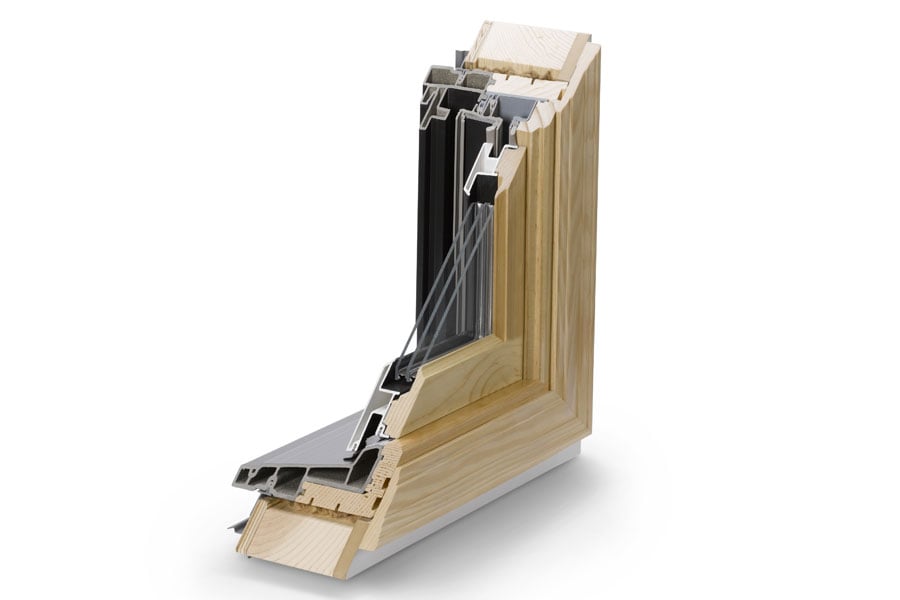
What’s the difference between triple-pane glass and dual-pane glass?
Triple-pane and dual-pane glass are both types of insulated glass units (IGUs). An IGU includes two or more panes of glass sealed together with an air space in between. The air space on our windows is typically filled with an argon-gas blend that helps slow down the transfer of energy and makes the glass more efficient.*
Here's the difference between the two types of IGUs we offer:
Dual-pane glass has two panes of glass and an air space in between. The air space can have an argon-gas blend and may be coated on two surfaces with a low-emissivity (Low-E) coating. Our windows come with specific combinations of Low-E coatings that improve energy efficiency in various climates.
Triple-pane glass has three panes of glass with two air spaces in between. Both air spaces can be filled with an argon-gas blend, so there are two opportunities to slow the transfer of energy. This type of glass also differs in that it offers an additional opportunity for adding a Low-E coating when compared to dual-pane glass. The additional air space and the additional opportunity for adding a Low-E coating help make triple-pane the most insulating glass option.

Low-E options for triple-pane glass
Low-E coatings can be applied to triple-pane glass in various ways. The more coatings applied, the better the thermal performance will be. Of course, the right option for you will depend on the local climate and goal of your build. Here’s what you should know about how Low-E coatings can be applied to triple-pane glass:
1. Standard triple-pane glass options include one surface with a Low-E coating. These are the standard coatings to choose from:
- Low-E4® Glass is a great option in most climates because it helps reflect heat in the summer and keep heat inside in the winter, making it ideal in any climate where both heating and cooling costs are experienced. It’s our trademarked Low-E glass construction and available on all our products.
- SmartSun™ Glass gives the benefits of Low-E4 glass while also blocking 95% of UV rays. This makes it a good option in all climates, particularly the sunny West or milder South. Find it available on all our products.
- PassiveSun® Glass allows the sun to help heat the home in the winter when a low sun angle directs more energy through the glass. It is made for climates where extensive heating is required and is ideally suited to passive homes. It’s available on all our products.
- Sun Glass is made to help block the sun’s heat and is tinted. Compared to SmartSun glass, its tint is more pronounced and it’s more effective at blocking the sun. It’s ideally suited for southern climates. Find it available on E-Series, A-Series, 400 Series, and 100 Series products, plus 200 Series patio doors.
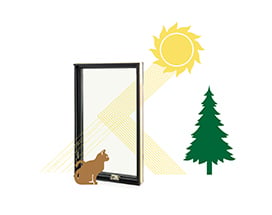
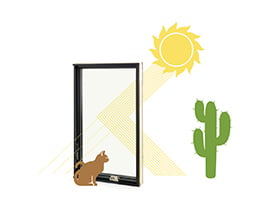
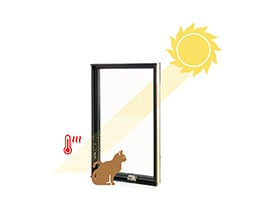
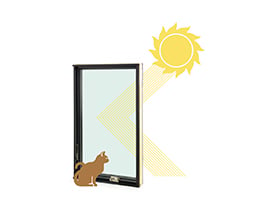
Our standard triple-pane window glass comes with one Low-E coating. You can select the coating appropriate to your climate when ordering.
2. Enhanced triple-pane glass options include two surfaces with Low-E coatings. Using two Low-E coatings can further enhance thermal performance. Here are some combinations to be aware of:
- Low-E4 Enhanced Triple-Pane Glass has one pane with Low-E4 coating and one pane with PassiveSun coating. This combination helps windows perform well in all seasons while also allowing the warmth of the sun to help heat the home. It’s a good option in northern climate zones.
- Low-E4 SmartSun Enhanced Triple-Pane Glass has one pane with Low-E4 coating and one pane with SmartSun coating. This combination helps keep homes cool in summer and warm in winter, with the added benefit of blocking 95% of UV rays. It’s a good option where there are both heating and cooling bills along with lots of direct sunlight.
- Low-E4 PassiveSun Enhanced Triple-Pane Glass has two panes with PassiveSun coating. This option helps improve thermal performance while avoiding too much tint. It’s a good option for the northermost climate zones.
3. Enhanced triple-pane glass with HeatLock® technology options allow for three panes to be coated with a combination of two of our “soft” coatings — Low-E4, SmartSun, Passive Sun, and Sun — and our “hard” coating of HeatLock technology. HeatLock technology helps keep heat from escaping the home. When it’s combined with the right “soft” coatings, it can provide a glass option that’s suited to various climate types. Here are three options to be aware of:
- Low-E4® PassiveSun Enhanced Triple-Pane Glass with HeatLock Technology allows the sun to help heat the home, so it’s best used in a home that’s designed to handle a higher solar heat load. It’s typically used in northern climates.
- Low-E4 SmartSun Enhanced Triple-Pane Glass with HeatLock Technology provides high thermal performance without too much solar heat gain, so it’s ideal in a home with lots of direct sun exposure. It’s typically used in southern climates.
- Low-E4 Enhanced Triple-Pane Glass with HeatLock Technology is ideal for homes where energy usage is split more evenly between heating and air conditioning and where there’s an intermediate amount of solar heat.
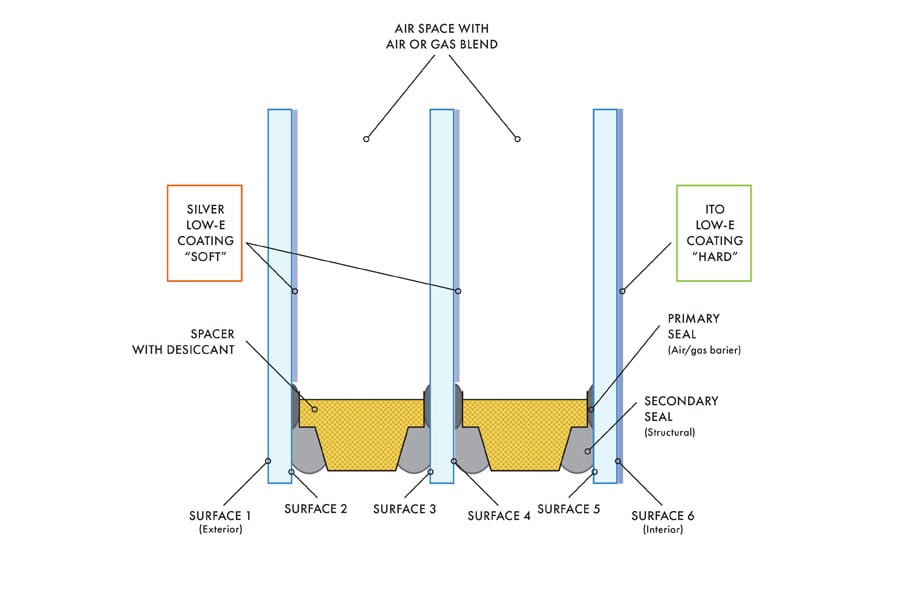
Triple-pane windows and R-Value
A window with triple-pane glass will have higher R-Value. R-Value measures resistance to energy (or heat) flow. In other words, when R-Value is in relation to a window it is measuring how well the window keeps heat from escaping the home, or how insulating the window is. A triple-pane window will almost always have a higher R-Value than a window with dual-pane glass. This is because of the qualities described above. Namely, the additional pane of glass and additional air space combined with opportunities for Low-E coatings slow down the transfer of heat.
When looking at windows and doors, you’ll see thermal performance measured with U-Factor, rather than R-Value. U-Factor is the inverse of R-Value. Instead of measuring resistance to heat flow, it measures heat loss, with smaller numbers indicating a slower rate of loss. Although both measures relate to thermal performance, it’s most common to see R-Value used to measure wall assemblies and U-Factor to measure window assemblies. U-Factor is also the measure used by the National Fenestration Ratings Council (NFRC), which is a nonprofit organization that has established window, door, and skylight energy performance ratings.
It’s important to look at the U-Factor for the entire window assembly — glass, frame, etc. — when assessing performance. To do this, look for the “whole unit” U-Factor measure, rather than “center of glass” U-Factor measure. It’s particularly important to look at U-Factor in a cold climate because it will help you understand how well the unit will help keep warm air inside the house in winter. (Whereas in a hot climate, Solar Heat Gain Coefficient would be the key thermal measure to evaluate because it gives an indication of how well the unit will help keep the sun’s heat out of the home).
Are triple-pane windows worth it?
Short answer: Yes, in the right location, in the right home, and for the right homeowner — triple-pane windows can be worth it. Here’s what we mean:
- Northern climate zone: Triple-pane glass is most impactful in northern climate zones where more energy use is spent on heating. This is because triple-pane glass is the most insulating.
- High-performing homes: In a home that’s designed to be high-performing, such as a passive house, this type of glass might be the right choice.
- Comfort and efficiency-minded homeowners: The type of homeowner interested in enjoying higher levels of thermal comfort and noise reduction, without sacrificing views and natural light, is more apt to see the appeal of triple-pane windows.
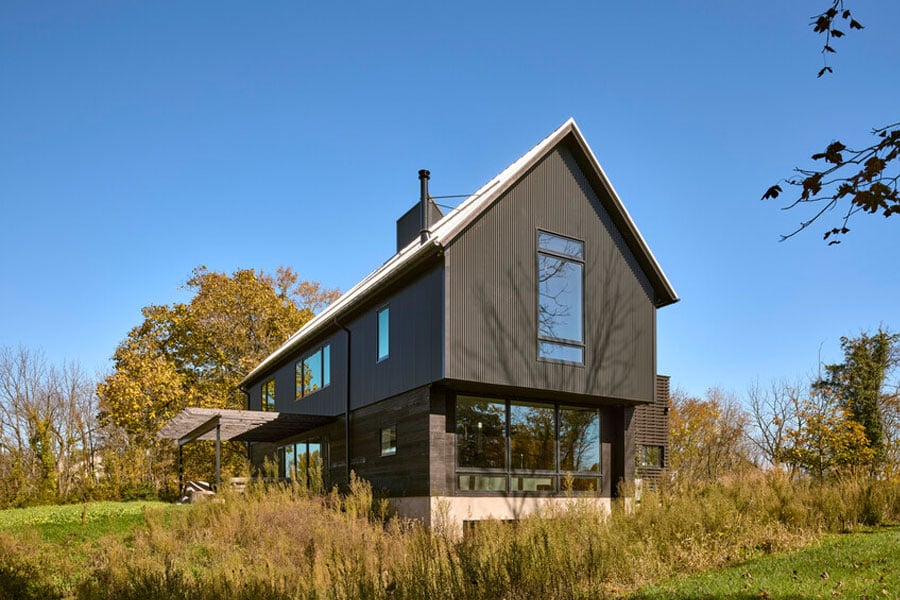
Triple-pane windows and code
If you live in a northern climate, it’s likely you will begin to see increased reason to choose this type of glass — here's why:
- Stricter mandatory codes: Energy codes are becoming more stringent in some places, such as states in the Northeast, like Massachusetts and New York. Some of these states are implementing “stretch code,” which goes beyond base code in pursuit of energy and climate goals.
- Stricter voluntary codes: ENERGY STAR version 7.0, which was released at the end of 2023, is generally considered a leading indicator for where mandatory code will go next. To meet ENERGY STAR performance criteria in the northern climate zone, it’s becoming increasingly necessary to switch from dual-pane glass to triple-pane glass.
Wondering which window and door products will meet ENERGY STAR criteria?
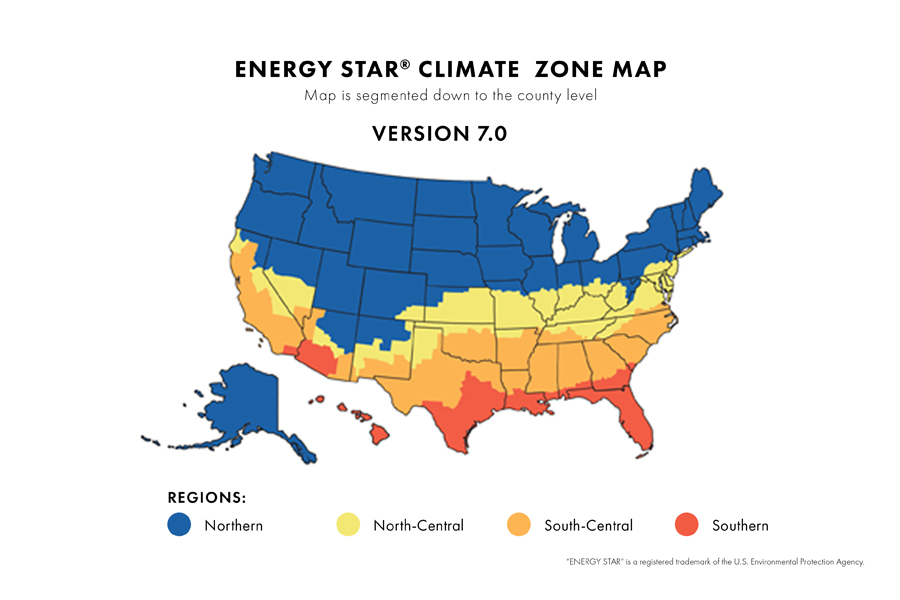
Triple-pane glass and noise reduction
Windows with triple-pane glass will almost always outperform windows with dual-pane glass from a sound perspective. This is because they are thicker. The thickness of the two air spaces and three panes of glass helps slow down the transmission of sound. The measures used to evaluate sound performance are sound transmission class (STC) and outdoor-to-indoor transmission class (OITC). STC measures how well sound travels inside a building — think TV or conversations — and might be helpful to consider when evaluating windows for a multi-family unit. OITC, on the other hand, measures outdoor-to-indoor sounds and might be most helpful to consider where there are concerns about traffic noise, airplane noise, etc. We provide both metrics through the testing we do — find performance documents.
Keep in mind, triple-pane glass is not the only way to reduce noise.
How much are triple-pane windows?
The exact cost will depend on the product line, type of window, and options added. However, it’s true that triple-pane windows typically cost more than standard dual-pane windows. This is because triple-pane windows require more materials to make, including some that are more expensive. They also require more time to manufacture. The glass specifically takes more time to produce. With a thicker and heavier piece of glass, different components are needed to make the window operate — again contributing to a higher price.
Another aspect that contributes to increased price is the physical weight of the window, which is typically 1.5 times the weight of a standard dual-pane window. This means that more labor or equipment might be required for installation.
Despite the expense, triple-pane windows might be the right solution for your project, particularly if you’re looking for the highest-performance possible without sacrificing aesthetics. In that case, we'd suggest starting with the A-Series, which combines both these qualities.
Which products are available with triple-pane glass?
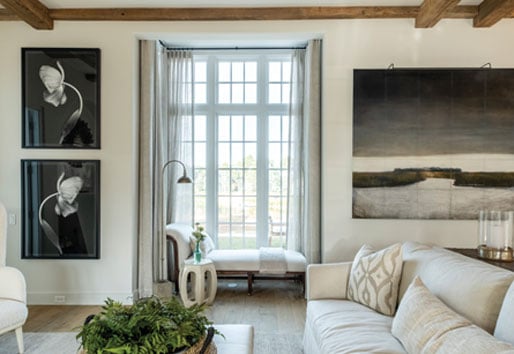
Products
A-Series windows and doors
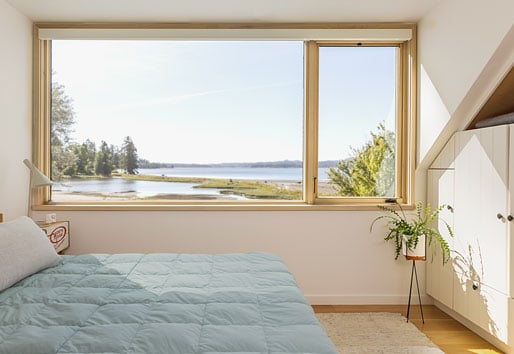
Products
E-Series windows and doors
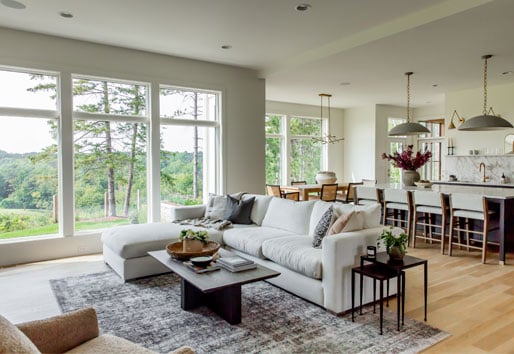
Products
400 Series windows and doors

